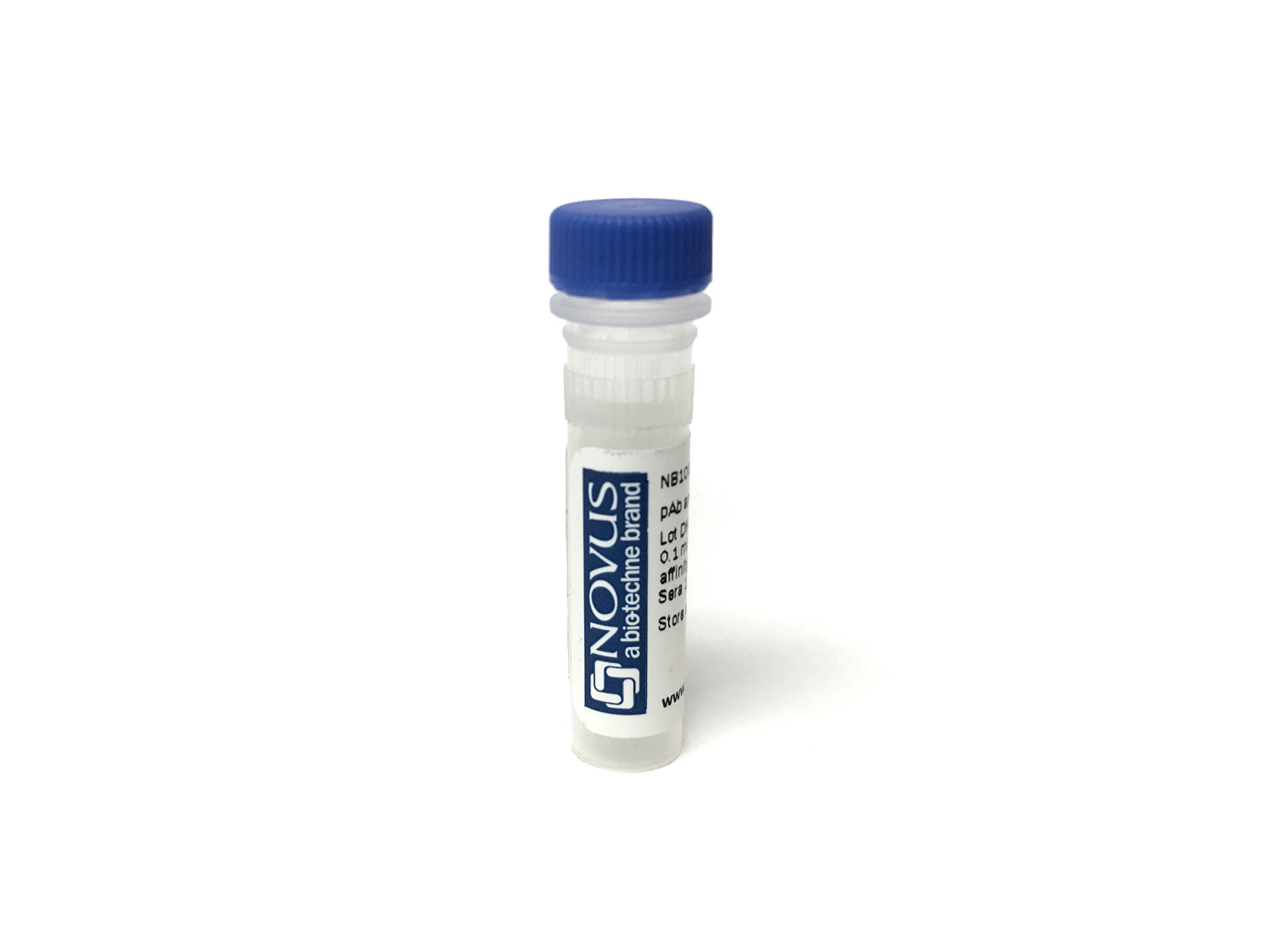TIM-3 Antibody - Humanized, IgG4SP, (Research Grade cobolimab Biosimilar) - Low Endotoxin, Azide and BSA Free
Novus Biologicals, part of Bio-Techne | Catalog # NBP3-28195
Recombinant Monoclonal Antibody


Conjugate
Catalog #
Key Product Details
Species Reactivity
Human
Applications
ELISA, Flow Cytometry, Functional
Label
Unconjugated
Antibody Source
Recombinant Monoclonal Human IgG4
Format
Low Endotoxin, Azide and BSA Free
Concentration
LYOPH mg/ml
Product Specifications
Immunogen
TIM-3 / HAVCR2 / CD366
Clonality
Monoclonal
Host
Human
Isotype
IgG4
Endotoxin Level
< 0.001EU/ug,determined by LAL method.
Description
Expressed from CHO. The heavy chain type is huIgG4SP, and the light chain type is hukappa. It has a predicted MW of 145.5 kDa.
Also known as 'cobolimab'.
Upon receipt, store immediately at -20C or lower for 24 months in a lyophilized state. - 80C for 3 months after reconstitution. Avoid repeated freeze-thaw cycles.
Also known as 'cobolimab'.
Upon receipt, store immediately at -20C or lower for 24 months in a lyophilized state. - 80C for 3 months after reconstitution. Avoid repeated freeze-thaw cycles.
Applications
Application
Recommended Usage
ELISA
Optimal dilutions of this antibody should be experimentally determined.
Flow Cytometry
Optimal dilutions of this antibody should be experimentally determined.
Functional
Optimal dilutions of this antibody should be experimentally determined.
Formulation, Preparation, and Storage
Purification
Protein A purified
Reconstitution
Reconstitute with sterile, distilled water to a final concentration of 1 mg/ml. Gently shake to solubilize completely. Do not vortex.
Formulation
Lyophilized from 25mM histidine, 8% sucrose, 0.01% Tween80 (pH6.2)
Format
Low Endotoxin, Azide and BSA Free
Preservative
No Preservative
Concentration
LYOPH mg/ml
Shipping
The product is shipped at ambient temperature. Upon receipt, store it immediately at the temperature recommended below.
Stability & Storage
Store at 4C.
Background: TIM-3
Dysregulation of TIM-3 expression is associated with autoimmune diseases as shown by studies where inhibition of TIM-3 using blocking antibodies worsened disease progression in experimental autoimmune encephalomyelitis (EAE) models of multiple sclerosis (MS) (2,3,5). Conversely, high levels of TIM-3 have been shown during viral infection as well as in many cancer types where its increased expression may be an indicator of poor prognosis (2,3,5). TIM-3 has emerged as a potential cancer immunotherapy target as preclinical studies blocking TIM-3 results in increased anti-tumor immunity and prevents tumor growth (3,5). Studies have suggested combination therapy of TIM-3 blockade with blockade of other checkpoint inhibitors such as programmed death 1 (PD-1) or lymphocyte activation gene 3 (LAG-3) is more effective than TIM-3 blockade alone (3,5).
References
1. Acharya N, Sabatos-Peyton C, Anderson AC. Tim-3 finds its place in the cancer immunotherapy landscape. J Immunother Cancer. 2020; 8(1):e000911. https://doi.org/10.1136/jitc-2020-000911
2. Das M, Zhu C, Kuchroo VK. Tim-3 and its role in regulating anti-tumor immunity. Immunol Rev. 2017; 276(1):97-111. https://doi.org/10.1111/imr.12520
3. Joller N, Kuchroo VK. Tim-3, Lag-3, and TIGIT. Curr Top Microbiol Immunol. 2017; 410:127-156. https://doi.org/10.1007/82_2017_62
4. Uniprot (Q8TDQ0)
5. Wolf Y, Anderson AC, Kuchroo VK. TIM3 comes of age as an inhibitory receptor. Nat Rev Immunol. 2020; 20(3):173-185. https://doi.org/10.1038/s41577-019-0224-6
Long Name
T Cell Immunoglobulin Mucin-3
Alternate Names
CD366, HAVcr-2, HAVCR2, KIM-3, SPTCL, TIM3, TIMD3
Gene Symbol
HAVCR2
Additional TIM-3 Products
Product Specific Notices
This product is for research use only and is not approved for use in humans or in clinical diagnosis. Primary Antibodies are guaranteed for 1 year from date of receipt.
